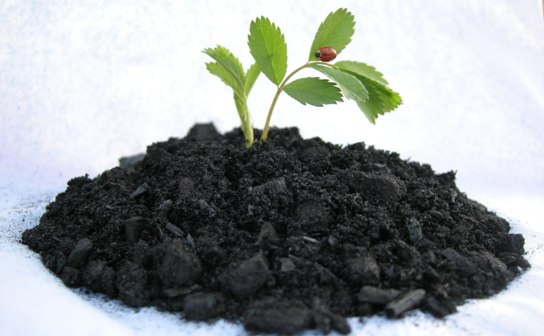Basic, safe, sustainable sanitation remains an issue for approximately 2.5 billion people world-wide. These people do not have access to running water or safe sanitation methods such as sewage systems or water processing plants. Now, with sufficient sunlight, a new solar powered toilet can serve up to a family of six while turning their waste into a product that they may want. A University of Colorado at Boulder team has developed a toilet that is not only solar powered but can generate biochar.
Biochar was used as a farming aid in the Amazon basin almost 3,000 years ago. The indigenous people took wood and leafy greens and roasted them in smothered fires. These low temperature burns created charcoal as opposed to ash. The people then took the charcoal and buried it in the fields to fertilize crops. With the arrival of the Europeans, this type of farming was soon gone but the layers of biochar remained. In the 20th Century, these deposits of black soil were found and in the 1990s it was discovered by scientists that this black soil was actually made by man. The soil deposits were immense. Some of the deposits were up to six feet deep with a total acreage on the order of 180,000 square miles.
Scientists are currently theorizing that the black soils are self-propagating. The biochar acts like humus and becomes colonized by earthworms, fungi, microbes and other creatures. In fact, the soil organisms produce molecules that are carbon-based, which means that they stick to the charcoal and, over time, increase the carbon content of the soil. This keeps greenhouse gases, such as the carbon from decomposing plants, from escaping into the air. So, the biochar made from biomass is a carbon sink which means that for each ton of biochar, the soil would be capable of holding a minimum of three times the amount of carbon.
The self-contained solar powered toilet was developed by Karl Linden, a professor of environmental engineering at Colorado University in Bolder. The toilet uses the sun’s energy to sterilize the solid human waste, a need and a want of approximately 40 percent of the Earth’s population. In addition to the sterilization of the waste, this particular toilet turns the waste into biochar. Not only simply a soil additive, the resultant product from the toilet may be used for heating.
The toilet utilizes the sunlight to heat up the waste and turn it into biochar. This process is done by using eight parabolic mirrors which focus the light on a small area. This, in turn, heats up a bundle of fiber optic cables which transmits the heat to a reaction chamber. The temperatures in this reaction area may exceed 600 degrees Fahrenheit.
The Colorado University team’s efforts were partially funded by a challenge issued by the Gates Foundation. The idea behind the “Reinvent the Toilet Challenge” is to seek and develop a new and reinvented toilet. The goal is to create a product which is able to not only sterilize both the solid and liquid waste but produce something useful as an end result. The current toilet designed by the university team is intended to function for a single family of four to six people but the team is also working on a larger version which may be useful for multiple households.
This solar powered toilet will be on display on March 22 in Delhi, along with 15 other inventions from sources such as Caltech and the National University of Singapore to Delft University of Technology located in the Netherlands. This convention will display a variety of toilets, all of which have been winners of the Gates Foundation’s “Reinvent the Toilet Challenge”. This particular toilet from the University of Colorado will be on hand for those who want to view the product and see how a solar toilet is able to turn human waste into biochar.
Source: http://guardianlv.com/2014/03/solar-powered-toilet-turns-waste-to-want/

No comments:
Post a Comment